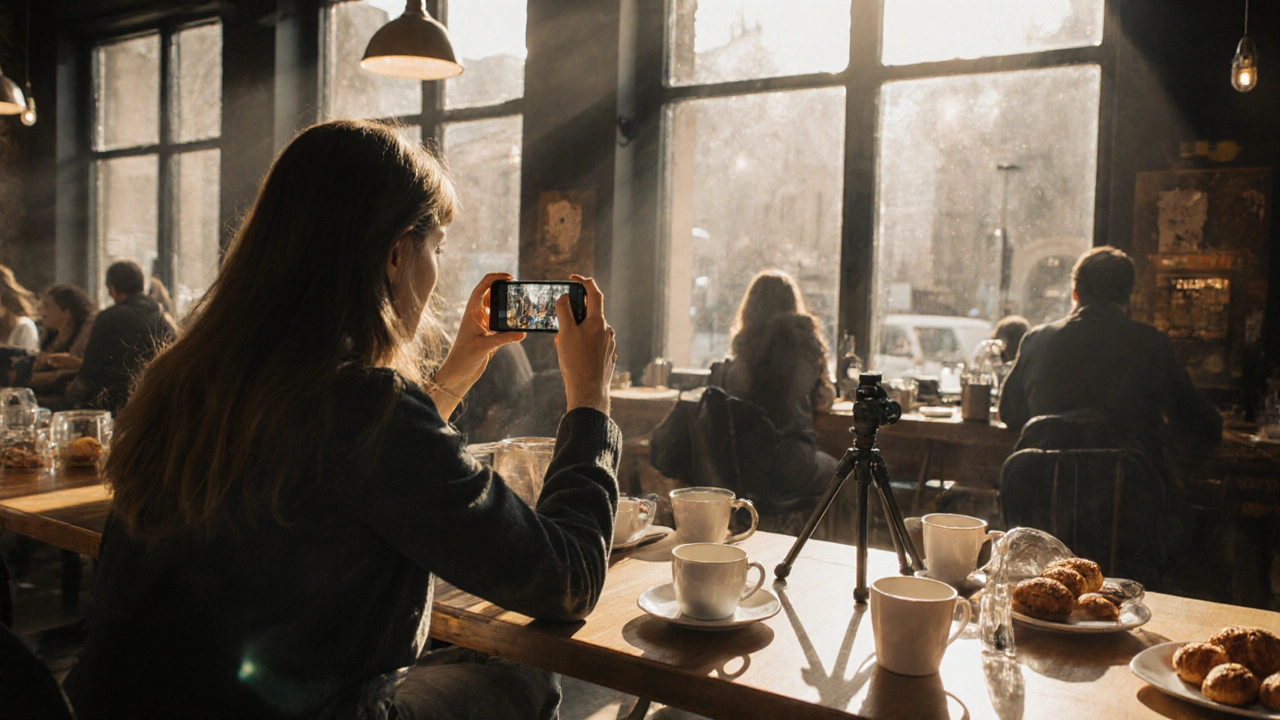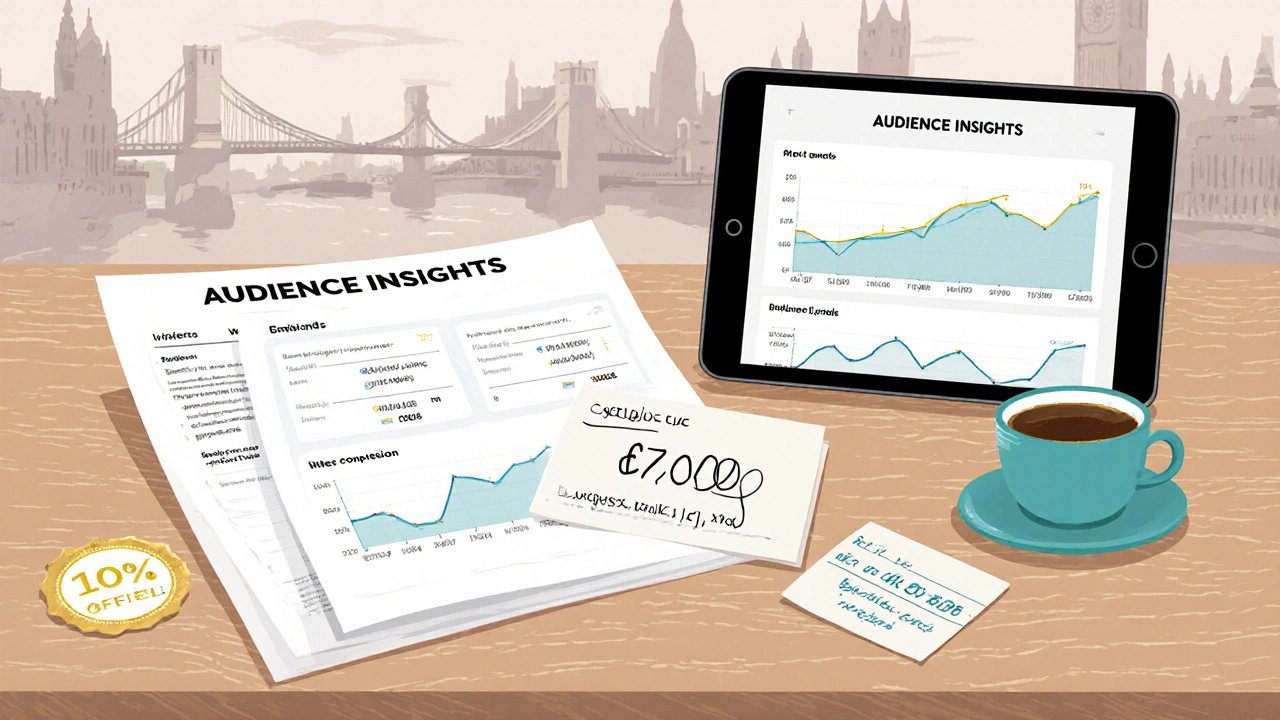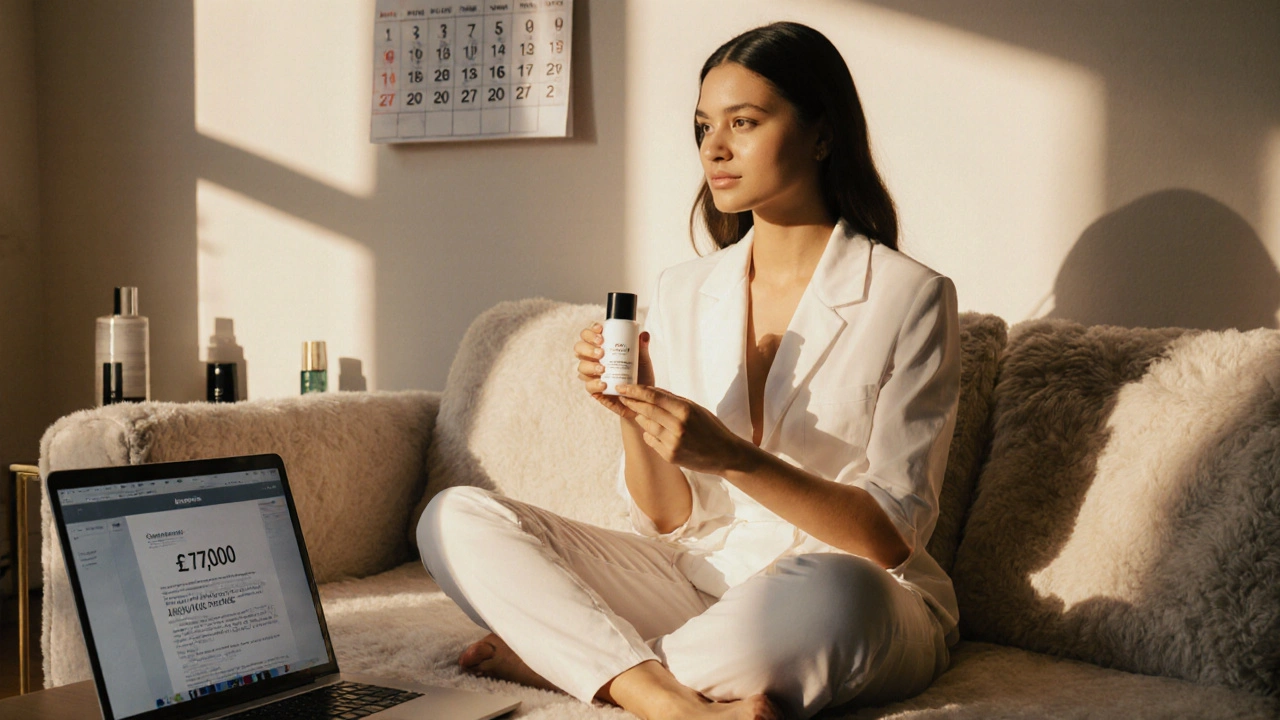
Brands in London are spending more than ever on influencers - but not all influencers are getting paid the same. In 2025, the gap between top-tier creators and micro-influencers has widened, and the rules of engagement have changed. If you’re a brand trying to figure out how much to pay, or an influencer wondering if you’re being underpaid, here’s what’s actually happening on the ground.
What Influencers in London Are Actually Earning in 2025
Influencer pay in London isn’t one-size-fits-all. It’s split into clear tiers based on reach, engagement, and niche. A creator with 50,000 followers in fashion might earn more than someone with 200,000 followers in tech - because their audience is more valuable to the brand.
Here’s the real breakdown:
- Micro-influencers (5K-25K followers): £150-£600 per post. These creators often have engagement rates above 8%. Brands love them for hyper-local campaigns - think independent coffee shops in Shoreditch or boutique fitness studios in Notting Hill.
- Mid-tier influencers (25K-100K followers): £800-£3,000 per post. This is where most mid-size brands operate. Think beauty brands partnering with makeup artists who post daily tutorials, or fintech startups working with finance coaches on Instagram and TikTok.
- Macro-influencers (100K-500K followers): £3,500-£12,000 per post. These are the names you recognize - consistent content, polished aesthetics, and loyal followings. They often get paid for multi-post campaigns, not just single posts.
- Top-tier influencers (500K+ followers): £15,000-£50,000+ per post. These are the celebrities of the influencer world. Think TikTok stars with viral dance trends or YouTube personalities with documentary-style content. Their rates include exclusivity clauses, long-term contracts, and sometimes equity in the brand.
Don’t assume follower count is everything. A London-based influencer with 30,000 followers who posts about sustainable fashion and gets 12% engagement will outperform someone with 200,000 followers who posts generic lifestyle content with 2% engagement. Brands pay for results, not just numbers.
Why London Influencers Are Getting Paid More Than Elsewhere in the UK
London isn’t just the capital - it’s the advertising engine of the UK. Over 60% of UK-based influencer marketing budgets are spent in London, according to a 2025 report from the Influencer Marketing Association. Why? Because London has the highest concentration of brand HQs, luxury retailers, and digital agencies.
Also, the cost of living here is higher. Influencers in London pay more for studio space, photographers, stylists, and even coffee for their content shoots. A post that costs £500 to produce in Manchester might cost £1,200 in Camden. Brands know this - and they adjust budgets accordingly.
Plus, London audiences are more diverse, more connected, and more likely to convert. A campaign targeting South Asian beauty products in Wembley will perform better than the same campaign in Leeds - simply because the audience density and cultural relevance are higher.
The New Rules: It’s Not Just Posts Anymore
In 2025, brands aren’t just buying single Instagram posts. They’re buying campaigns. A typical deal now includes:
- 3 Instagram feed posts
- 5 Stories (with swipe-up links)
- 1 TikTok video
- 1 YouTube Shorts
- Access to the influencer’s email list (if they have one)
- Exclusive discount code tracked by the brand
Some brands even throw in a paid collaboration with the influencer’s team - like hiring their content assistant for a day, or funding a small photoshoot in a London landmark like the South Bank or Brick Lane.
One London-based influencer, who focuses on sustainable parenting, landed a £7,000 deal with a babywear brand that included:
- Two Instagram carousels
- Three Stories with polls and Q&A
- One 90-second YouTube video filmed at a local eco-market
- A 10% commission on all sales from her unique code for six months
That’s the new standard. Paying for a single post? That’s 2020 thinking.

What Brands Are Actually Looking For
Brands don’t want pretty pictures. They want proof.
Here’s what they ask for before signing a deal:
- Access to analytics - not just likes, but saves, shares, link clicks, and follower growth spikes after posts
- Real audience demographics - age, location, income level, purchase habits
- Proof of authenticity - comments that sound real, not generic “Love this!” replies
- Previous campaign results - screenshots of past sales, UTM tracking, or promo code redemptions
One fintech startup in Canary Wharf recently turned down a macro-influencer with 400K followers because their comments were 70% bots. Instead, they signed with a micro-influencer who had 18K followers but a 14% engagement rate - and generated 3x more sign-ups.
It’s not about being famous. It’s about being trusted.
Red Flags That You’re Being Lowballed
If a brand offers you £100 for a post and says, “We’ll give you exposure,” run. Exposure doesn’t pay rent.
Here are the top red flags:
- They ask for “free product” as payment - unless you’re a nano-influencer under 5K followers, this is exploitative.
- They want 10+ posts for the same fee - that’s not a campaign, that’s content farming.
- They don’t provide a contract - verbal deals vanish when things go wrong.
- They refuse to share campaign KPIs - if they won’t tell you what success looks like, they’re not serious.
Legit brands have budgets. They know influencer marketing isn’t cheap. If they’re trying to nickel-and-dime you, they’re not worth your time.

How to Negotiate Your Rate Like a Pro
You don’t have to accept the first offer. Here’s how to negotiate:
- Know your worth. Track your engagement rate, follower growth, and past campaign results. Use tools like HypeAuditor or SparkToro to back up your claims.
- Ask for a media kit. Even if you’re small, create a simple PDF with your stats, audience breakdown, and past work.
- Bundle your services. Offer a post + Story + TikTok for a flat fee. Bundles feel more valuable.
- Ask for performance bonuses. “If my code drives 500 sales, I get an extra £500.” This aligns you with the brand’s goals.
- Be ready to walk away. If they won’t budge and you’re not a charity, say no.
One London influencer increased her rate by 200% after she started sending brands a simple spreadsheet showing how her last campaign drove £18,000 in sales. She didn’t ask for more - she showed them the math.
The Future: AI, Exclusivity, and Long-Term Partnerships
By 2025, AI tools are helping brands find influencers faster - but they’re also making it harder for low-quality creators to get paid. The market is cleaning up.
Now, the winners are those building long-term relationships. Brands are shifting from one-off posts to 6- to 12-month ambassadorships. Think of it like hiring a part-time marketing team member - but without the salary or benefits.
Top influencers in London are now signing retainers: £3,000-£8,000 per month for 3-4 posts, exclusive access, and first dibs on new products. One beauty influencer with 120K followers signed a £72,000 annual deal with a London-based skincare brand. She didn’t have to chase campaigns - they came to her.
The future isn’t about going viral. It’s about being reliable.
Final Takeaway: It’s Not About Being the Biggest - It’s About Being the Right Fit
If you’re a brand: Stop chasing follower counts. Look for creators whose audience matches your customer. A 10K follower influencer with a 9% engagement rate in Peckham who sells your vegan protein powder is worth more than a 500K follower with 1% engagement who posts about vacations in Bali.
If you’re an influencer: Stop undervaluing yourself. Your content has value. Track your results. Build a media kit. Say no to freebies. And remember - in London, your niche matters more than your numbers.
The influencer economy in London isn’t collapsing. It’s maturing. And those who treat it like a real business - not a hobby - are the ones making real money in 2025.
How much do micro-influencers in London make in 2025?
Micro-influencers in London (5K-25K followers) typically earn between £150 and £600 per post. Their value comes from high engagement rates - often above 8% - and hyper-local audience trust. Brands pay more for authentic interaction than for follower count.
Why are influencer rates higher in London than in other UK cities?
London has the highest concentration of brand headquarters, luxury retailers, and digital agencies in the UK. The cost of producing content is also higher due to studio rentals, photography, and location fees. Plus, London audiences are more diverse, more affluent, and more likely to convert - making campaigns here more valuable.
Is it worth it for small brands to work with influencers in London?
Yes - if they target micro or mid-tier influencers. Small brands can get strong ROI by working with creators who have 10K-50K followers and high engagement. These influencers often have niche audiences that match specific products, and their campaigns cost far less than traditional ads.
What should I include in my influencer media kit?
Your media kit should include: your follower count by platform, average engagement rate, audience demographics (age, location, income), past campaign results with metrics (sales, clicks, code redemptions), and 3-5 examples of your best content. Keep it clean, professional, and data-driven.
Can influencers in London get paid in product instead of cash?
For nano-influencers (under 5K followers), product exchanges are common. But for anyone with 10K+ followers, cash payment is standard. If a brand offers only product to a mid-tier influencer, it’s usually a sign they’re undervaluing your reach and effort. Always negotiate for fair compensation.
Are influencer rates in London going up or down in 2025?
Rates are going up - but only for creators who deliver results. Brands are cutting ties with low-engagement influencers and paying more to those who drive sales, sign-ups, or brand trust. The market is becoming more selective, not less. Top performers are earning more than ever.